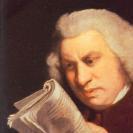-
Posts
67 -
Joined
-
Last visited
-
Days Won
9
Aria Donn last won the day on June 4 2024
Aria Donn had the most liked content!
About Aria Donn

- Birthday 12/12/2000
Profile Information
-
Biography
I'm a part-time amateur composer, but lifelong classical music lover. Due to financial stability concerns, my career will most likely involve the advancement of economic theory instead of music theory. But being something of a violinist myself, I often compose in the manner of the virtuoso showmen of the past such as Paganini, creating technically challenging works which I will set before myself and attempt to perform. But I also compose almost as frequently for other ensembles, orchestras, and instruments I don't myself play, depending on what inspiration strikes.
-
Gender
Female
-
Location
Pennsylvania, USA
-
Occupation
Economics and mathematics student
-
Interests
Composing, chess
-
Favorite Composers
Tchaikovsky, Dvorak, Mahler, Roman Kim, Z.J. Strudwick
-
My Compositional Styles
Romantic, neoclassical
-
Notation Software/Sequencers
Finale 2014.5, Musescore 4
-
Instruments Played
violin
Recent Profile Visitors
Aria Donn's Achievements
-
Aria Donn started following Nocturne posthume - transcription for violin and piano , Symphony No.1 - First Movement , My first symphony and 1 other
-

Symphony No.1 - First Movement
Aria Donn replied to HoYin Cheung's topic in Orchestral and Large Ensemble
The stylistic juxtaposition just feels a bit jarring to me. One moment it seems like it's going to be a very "conventionally tonal" piece, but even the "emancipated dissonance" sections seem to be approaching that goal with different degrees of respect for tonality. Some parts honestly just sound like wrong notes, while others seem highly logical (in a very Mahlerian sense). It could be a matter of how you juxtapose dissonant sections right next to highly consonant sections and give us a contrast we were not expecting. I actually have no problem with you introducing us to your "big tune" right away -- some of my favorite symphonies do this very successfully, such as Schumann's 3rd. You've got to be sure you have a knockout tune in order to do this, and yours is pretty good, so I don't take issue with any of that. It feels like you are at your most compositionally fluent with the aforementioned Mahlerian type of writing, passing themes around through various sections of the orchestra and giving us this free-flowing swirl of contrapuntal development. These are the passages that feel the most coherent and "natural". I have to say that the manner in which you accompany your themes at other times can come across as pedestrian or even "naked" compared to that dense, flowing counterpoint you offer us throughout a majority of the piece. The texture is just "too simple" when put up against the surrounding context. It might work in a different context but I'm not entirely sure I completely "buy it" in this piece from a narrative standpoint. -
This dialog is pretty much correct I think. There's a difference between writing something abstract and writing something unidiomatic and needlessly difficult. Hiding behind supposed goals of abstraction and complexity to excuse bad writing is not an easily definable thing, but like pornography according to the Supreme Court, "you know it when you see it" if you are a relatively experienced composer. My use of harp is very sparing, but that's roughly in line with how it should be used. As Thomas Goss (of OrchestrationOnline) says: decoration, filigree, support. The harp is like dessert, adding great delicacy to a thin texture but rapidly becoming stale if overused. Every orchestration challenge he issues stipulates NO HARP CONCERTOS for a reason: beginner composers see the double staff and get overexcited about what they (think they) can give the harpist, and wildly overestimate the instrument's real capabilities. At the end of the day the harpist has an ungodly difficult part that just gets drowned or forgotten in the texture. Let the harp do what it does best. The harpist won't mind if they have to sit and count some rests any more than my poor trumpet players will. They're paid to do that, so to speak. Notice that some of the most idiomatic harp writing I employ comes in the come una danza sections where I use glissandi and rolled chords - two extremely common and standard harp techniques to just add some background lush flavor to the texture. The exact notes played, insofar as they make the right chords, aren't important. The most I have the harpist do in a foreground role throughout the entire piece is that little dainty rising scale in the reprise of the danza. Again, decoration, filigree, support. To the other point, this work is actually not drawing on minimalism at all. The glacial note values are an emotional expression tool, not an attempt to simplify or pare anything down. My contrapuntal lines are actually fairly intricate a lot of the time even when the note values are long and the textures are thin.
-
Thanks for your kind review! Actually this piece is extremely personal to me. The motivic development was the unifying force keeping me from spiraling off-track with my conceptions and keeping any new material closely bound to the old material -- it wasn't just a theory exercise. But fundamentally the emotional trajectory was inspired (vaguely) by my struggles with gender identity and my eventual transition. I started composing this piece barely two months into my full-time social transition. There's no "program" per se, but that's where it was all coming from. It's funny because I encountered another composer on reddit who, about a month before I completed my own symphony, had published a symphony in a fairly similar style that was inspired by her gender transition. A boatload of other really crazy coincidences between both us and our symphonies then stacked up so high that a two nickels meme could be made out of it. It happens...
-

*Concerto* in A major (2022-) part 3
Aria Donn replied to Jaden Davidson's topic in Orchestral and Large Ensemble
Your use of piano and harp is horribly excessive and unidiomatic! Try writing a piece that uses neither instrument -- at all -- and see what it forces you to learn about orchestration. -
It's really funny that you detect the influence of Bruckner 7. I only listened to Bruckner 7 for the first time after the bulk of the piece had already been written! And I don't know it that well yet. When I started writing, I still didn't understand Bruckner and didn't like him. I definitely can see the resemblance, but it actually barely influenced me because I mostly wasn't aware of it!
-
I originally wrote the beginnings of a scherzando section that was going to appear at M, but I eventually scrapped it and put in what is there now. So it's definitely a thought I had, but I rejected it. I didn't think it fit. It broke the dramatic arc for me. I don't know very much of the oeuvre of either Bruckner or Sibelius, though I've started trying to explore Bruckner more recently and I am at least consciously aware that at times his influence did start to make itself felt as I got into the middle and end of the symphony. However, a much nearer and dearer inspiration to me is Mahler, and Tchaikovsky was on my mind heavily when composing the dance-like sections, despite me not really being aware of any specific piece by him that has those characteristics. I wasn't aiming to emulate any particular person though, so I could very well have created a hybrid style.
-
So anyway, the last time I tried to write a symphony was almost 8 years ago, and it was so terrible that it's now called Symphony No. 0 and we never speak of it. I was 15 at the time. I suppose (most) teenagers aren't generally known for writing great symphonies. But I recently tried again. This is now my Symphony No. 1. I just finished it today. It's in one vast, slow through-composed movement. I wonder if, as you listen, it is obvious who my main stylistic influences were. The entire piece is built from one motif, the three-note figure that bookends the whole thing of the rising leap followed by the falling step. I've been working on this for about six months. This symphony was the product of a lot of experimentation and often changing course on the fly. Not only have I never written this much slow music all at once before, but these are the largest orchestral forces I've ever handled, with the greatest variety of orchestral color at my disposal. It's also the first time in a while I have allowed myself the luxury of a harp, as previously I had always been wary of giving myself the opportunity to commit any of a number of common orchestration blunders. I'm enjoying the fruits of the new Muse Sounds I have gained access to by virtue of switching to Musescore. They're wonderful. They can be a bit buggy, but sometimes it's almost scary how human they sound. Curious about how this will be received.
-
Aria Donn changed their profile photo
-
It seems I have been summoned.... Unfortunately it's difficult to explain the ins and outs of violin writing in any reasonable span of text, especially virtuoso writing. The more difficult you want to make your part, the more nuanced of an understanding of the instrument you must have, and this comes with actual hands-on experience playing the instrument at that level. Of course that isn't to say you can't still write virtuoso music. Saint-Saens was hardly a violinist, after all, but many such non-violinist composers seeking to write difficult violin music did seek the advice and feedback of violinists in their compositional process, often sending them drafts and allowing them to make edits. They employed what is most likely the best approach to such things: write whatever you want, and worry about whether it's playable later. Violins are probably more agile than you may think they are. I'd heavily advise against just trying to create virtuoso writing purely for its own sake. That is a surefire way to heavily compromise the musical integrity of what you're writing and it can really destroy any musical inspiration you may have. Concentrate on writing a nice tune first, then try to develop it with flowery embellishments calling for virtuoso technique. Not only will the fundamental idea underlying the piece be clearer to the audience, since its first appearance will be clean and unornamented, but I honestly even think the virtuoso writing will come easier after that. Interestingly, something I wrote a while back comes surprisingly close to fitting the profile of what you seem to want to write: my Romance in D (2020). It's monothematic (i.e. there is no "B theme" to speak of) and a little longer than your target, but it is still steeped in romantic-era conventions and is basically in ternary form with a coda (the middle section is bookended by the double bars). The accompaniment is fairly simple throughout (mostly block chords and arpeggios); you don't need to spend a lot of time fretting about making something super novel or complicated. The only real secret is an attempt to adhere to good voice leading, particularly with the bassline, though you may also hear some somewhat melodic-sounding lines in the right hand as well, which makes it sound interesting, even if it's very simplistic at a fundamental level. (This is why we study Baroque counterpoint -- its principles are universally applicable to all common-practice tonal music.) You'll notice I used many of the strategies I promote here, such as presenting a relatively unadorned melody at first before embellishing it the next time around. Like I was saying, the exact strategies for achieving good virtuoso violin writing are hard to put into a small number of words, but obviously everything I wrote here in this piece is playable (since both me and my accompanist played it), so similar-looking techniques in your piece should also be playable. I took a listen to your previous work, and it seems you already have the ability to write a good melody based on a motivic cell, so I won't go into that much, but I do want to reiterate that it is a very powerful compositional technique that I also use in my Romance. (My main motivic cell is a rising triad in quarter notes.) It lends the piece a great sense of unity and forms powerful recall associations in the listener's mind that keep them believing that whatever material you're showing them now really does belong in the same piece with what they heard before. Just be careful to avoid writing anything that is impossible on an elementary level, such as double-stops in which both notes can only be played on the G-string. Otherwise, focus on compositional integrity, substance, and sound first. The explicit aims for virtuosity come later.
- 12 replies
-
- 2
-

-
- romance
- violin sonata
-
(and 2 more)
Tagged with:
-

Moonlight sonata arranged for orchestra
Aria Donn replied to Aria Donn's topic in Orchestral and Large Ensemble
Are you sure they won't be heard there? There's not a lot going on, really - really soft string pad (pp -> ppp), viola playing a somewhat similar line, a guttural drum pulse. You don't think that could be balanced in such a way so that the flute does poke through a little? -

Nocturne posthume - transcription for violin and piano
Aria Donn replied to Aria Donn's topic in Chamber Music
I usually do for longer pieces, but here I just don't think it's particularly necessary given the brevity of the piece and the high number of natural landmarks (key changes, repeat signs). -

Nocturne posthume - transcription for violin and piano
Aria Donn replied to Aria Donn's topic in Chamber Music
Thank you, my main goal was to keep the transcription as faithful to the original score as possible, no extra notes as long as I didn't feel they were texturally necessary. Indeed sometimes the piano would have thinned out noticeably by transferring the melody to the violin in a way that is masked by the homogenous texture of the original, so only in those cases did I fill in extra notes. I only departed from the score in this way 4 times I believe, see if you can find the spots. -
Not an original composition, but a transcription. I recently came across a rare piano piece by H.W. Ernst that I decided to transcribe for violin and piano. I figure if the composer is H.W. Ernst, it deserves to be heard on the violin.
-

Symphony in A Major (2022-?) - part 2
Aria Donn replied to Jaden Davidson's topic in Orchestral and Large Ensemble
Overall, your biggest problem is that you seem to be almost writing a piano+harp double concerto. The focus and complexity are so disproportionately weighted towards these two instruments that it's a serious problem for your score. I highly recommend for beginning orchestrators to basically just pretend the piano and harp don't exist, to avoid accidentally overusing them. -

Moonlight sonata arranged for orchestra
Aria Donn replied to Aria Donn's topic in Orchestral and Large Ensemble
I'm going to push back a bit on your comments in defense of the choices I made. I don't believe the movement should be played any slower. If I recall correctly, my tempo is pretty much exactly what Czerny tells us it is supposed to be, except I wrote h=30 in my score in lieu of q=60 to emphasize that the piece is indeed written in 2/2, not 4/4. h=30 is indeed a very slow adagio in 2/2. The "lack of delicacy" was also intentional. I felt if I made the piece too delicate it would again fail to capture the tragic, depressed, funereal spirit I was really aiming for. The reference recording that inspired me (played on a fortepiano) was naturally rather percussive in nature, and the level of tone color control achievable on a modern piano is much greater than that which appears to have been achievable on Beethoven's. So I didn't feel the need to make my orchestration too thin or light during the most dramatic moments to comply with his directions. I just did what I wanted, using that recording as a loose benchmark, and tried to make it sufficiently dramatic to "spruce up" a piece I consider to almost always be extremely poorly understood and interpreted. Of course the point of orchestrating was a) to demonstrate a set of interpretation ideas much more concretely than I ever could by simply playing it (I also can't play piano proficiently anyway!) and b) to practice orchestrating a piece that has, rightfully, often not been thought to be orchestration-friendly due to how overtly pianistic it is. -

Moonlight sonata arranged for orchestra
Aria Donn replied to Aria Donn's topic in Orchestral and Large Ensemble
Absolutely, go for it.







